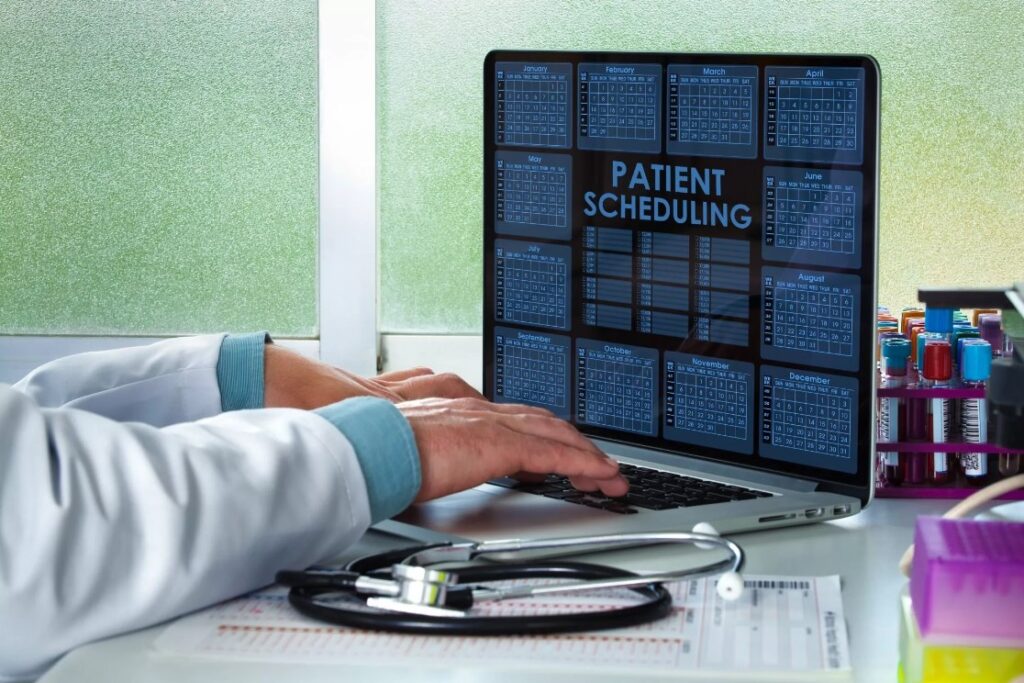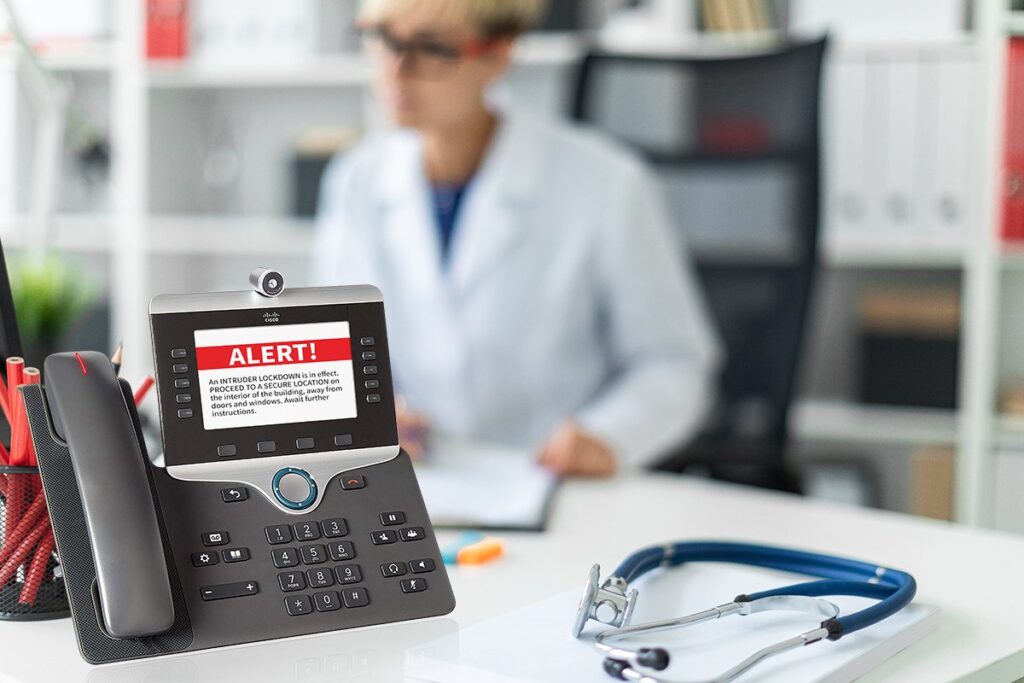Patient engagement and primary healthcare services are driving a digital revolution that looks to establish a people-centered healthcare industry. They simplify implementing a coordinated, secure, accessible care system for individuals and families.
Patient engagement is helping healthcare organizations attain universal coverage, in line with the sustainable development goals that underline the promotion of healthy living for all.
What is Patient Engagement?
The definition of patient engagement may differ, depending on where you hear it. But one thing remains consistent: promoting and enhancing service users’ role as key players in healthcare policy management and practice. Involving patients when planning and implementing healthcare protocols helps improve services, healthcare service delivery, and treatment outcomes.
Patient engagement improves health outcomes by streamlining participation in medical decision-making. Patient engagement entails patients becoming active members of their service care team. It involves regular communication throughout the care process and taking more control of their health.
Patient engagement helps healthcare providers educate patients about treatment services and provides them with options for care decisions. It allows them to remain accountable and invested in their health.

Source: koruux.com
Why is Patient Engagement Important for Healthcare Provision?
Patient engagement is becoming widely accepted as an essential healthcare and medical services protocol. A crucial element of a secure service focused on people. People can select treatments after getting involved in the research. It can be applied more successfully when combined with patient priorities to maintain sustainable healthcare systems.
Healthcare users are calling for more excellent responsiveness and transparency.
As well as an open healthcare system that keeps them more involved with professionals.
Even though every patient is unique, the decision-making process, alongside their preference for such involvement, healthcare providers must balance competing priorities across patients. However, patient safety appears to be at odds with this. The organization, reputation, and priorities, in terms of money and self-worth, seem to come first.
Patients, however, have their own priorities such as safety and health, so providers can prioritize this when delivering services.
Additionally, patient involvement promotes shared responsibility and comprehension amongst patients and medical professionals. It is typically considered the basic service.
The best people to talk to about it are patients’ primary care providers. It streamlines the establishment of patient health status, situation, healthcare requirements, and personal values. Keeping patients well-informed enables them to report with more assurance and a strong mutual understanding. It enhances health and reduces negative occurrences while promoting learning and improvement.

Source: skedulo.com
Factors affecting patient engagement
Understanding the elements that encourage or inhibit patient readiness can help practitioners reduce harm and enhance patient safety.
- Patient demographics and health literacy
- Severity of illness
- Healthcare expert’s knowledge and attitude
- Patient Safety Measures
- Medical Expertise
Also, patient perception is a significant element that might undermine patient participation.
For instance, patients might feel afraid. However, you can overcome these challenges by ensuring access to communication, and education, and building a patient-provider relationship in healthcare.
How Patient Engagement Statistics Help Streamline Business?
Better clinical outcomes are the result of greater patient participation. Still, organizations continue to have difficulty including patients and their families in care programs. First and foremost, treating each patient as a care team member is difficult due to patient differences in care preferences and medical knowledge.
Since patients’ degrees of health literacy and willingness to participate in their treatment process vary, patient involvement can be problematic. By collecting relevant patient engagement statistics, care teams can still boost patient engagement and overcome these barriers. To identify and decrease health inequities, emphasize patient voice, and deliver appropriate patient education early in the care process, providers can use data to create shared decision-making across systems.
A good starting point for collecting data on patient experiences and healing results is understanding a patient’s wants, interests, and preferences.
Healthcare executives and providers can find chances to maximize patient participation by having access to data. They they can offer products and services they think would help them, like medicare supplementation at Medisupps.com.

Source: wellapp.com
How to Improve Your Patient Engagement
You’ve likely heard about the significant impact patient interaction can have on delivering high-quality care, which in turn results in fewer re-admissions, better outcomes, and even better patient experience. But do you precisely know which digital healthcare tools support the distinct aims and specialties of your team?
You can use the following steps to pick which elements to include in your patient engagement strategy.
1. Virtual Visitation
Using virtual meetings to facilitate consultations with medical professionals, enables patients to view and speak with a range of experts face-to-face, as though they were in the same room. More cost-effectively.
Through their client portal, patients can schedule virtual consultations with medical professionals at any time to check in and stay informed about their treatment and progress. Millions of patients have reported increased access and pleasure thanks to virtual appointments, and many say they’ve become familiar with their doctors.
A wide range of digital healthcare services is included in telehealth services.
This solution is used by big and small healthcare practices as they employ remote patient management for critical conditions such as diabetes or bp, perform teletherapy for addictions and mental health issues, or arrange virtual appointments using real-time video calls.
2. Online Scheduling
Many patients want to have simple access to convenient services. A business can let staff and clients schedule appointments that suit them most by implementing virtual booking.
Patients may lack time to call your office during business hours since they are working or have other obligations. Online reservation booking allows you to reserve open slots at any time, making it simple to access your healthcare services.
Also, when most people cancel at the very last second, it allows new clients to see you.
This will reduce cancellations and both your business and patient satisfaction will benefit from this.

Source: unitekcollege.edu
3. Appointment Reminders
Patients often return to their busy schedules after making an appointment, so your team will need to search through your collection of patient engagement tools for one that can handle appointment reminders.
Select the option that will benefit your medicare system and help:
- Cut down on no-shows.
- When a patient can’t make it, encourage them to cancel.
- Make room in your schedule.
- Lighten the workload for front desk staff.
When choosing a system for patient reminders, keep these objectives in mind. You’ll lower healthcare expenses and increase patient happiness. Messages to patients can be beneficial, but don’t send them too frequently; this will only make them feel inundated. When under undue pressure, they may withdraw from your services.
4. Patient Registries
A secure web platform characterized as a client portal enables 24/7 accessibility to electronic medical records for clients from any device connected to the internet. Patients can examine health information such as recent doctor visits, discharge summaries, prescription regimes, and test results by entering a personal id and password.
A patient portal enables users to communicate with their care team, request prescriptions, book appointments, confirm insurance coverage, make payments, confirm contact information, and view reports. It allows patients to remain in charge of their care and increases interaction. This in turn increases patient satisfaction.
5. Telemonitoring Observation
Using integrated care technologies can improve the management of long-term illnesses. Patients can utilize these devices at home, work, traveling, or even on vacation. The following are a few of the most widely used remote surveillance devices for patients:
- Glucose monitors for managing diabetes
- Congestive heart failure management using heart rate monitoring
- Measuring blood pressure with blood pressure cuffs
- Measuring blood oxygen levels with oximeters
- Continuous monitoring for dementia

Source: prevounce.com
6. On-call Assistance
Every patient gets easy access road to the healthcare they desire, thanks to the establishment of healthcare call centers.
Patients have choices and can quickly switch to a different provider. Every encounter you have with your staff must be flawless because of this. Patients should be able to schedule an appointment on the same day if they have an immediate requirement.
Every call is important. You can master doctor-patient communication and raise patient satisfaction with the help of a good call center. Patients leave primary care that may not correctly train customer service staff in competence and compassion.
7. Alerts via Email
You may create an engaging patient communication strategy that aids in patient retention using autoresponders and grooming programs. According to the National Institutes of Health, email-client communication has proven helpful for healthcare systems despite its relatively low usage.
Their study confirmed that online patient management tools can cause the displacement of some factions in the quest for simple access to health services. Using email for healthcare communication is more prominent among younger generations and educated factions. It is lowest among the older, least educated, and economically inactive.

Source: alertus.com
8. Reminder Texts
SMS communication in health systems helps simplify patient access to their services and to create a more individualized and convenient experience. Many clients, especially the older cohorts, may prefer text messages to emails for notifications like appointment reminders and changes to their prescriptions.
9. Social Network Education
The term “social media” has a broad and fast-growing scope. Suppose you currently use it as part of your web-based patient engagement tools. In that case, you are aware of how it helps organizations and individuals exchange intimate details and photos, and even collaborate in real time. You can use platforms such as Facebook, Twitter, LinkedIn, and YouTube.
10. Medication Compliance Checklist
People with chronic diseases must adhere to their treatment plans. Doctor visits combined with computerized patient engagement technologies, treatment reminders, and other patient statistical databases can enhance patients’ observance of treatment plans and results.



























